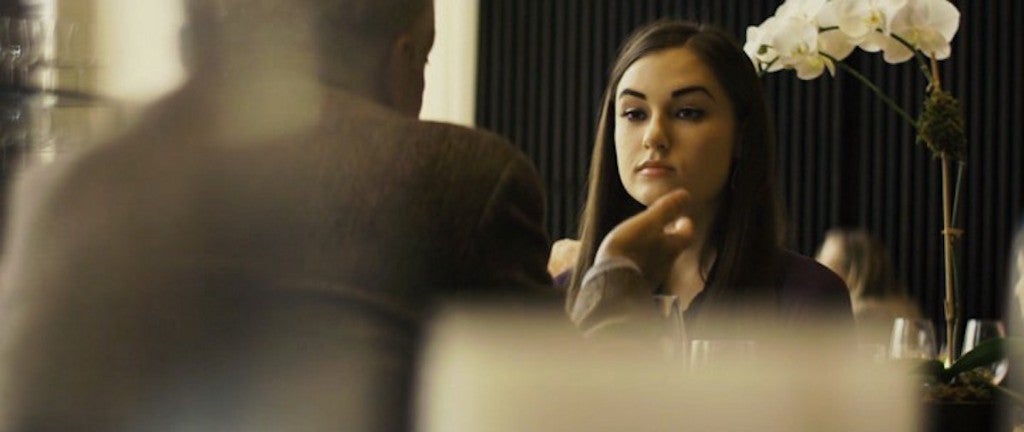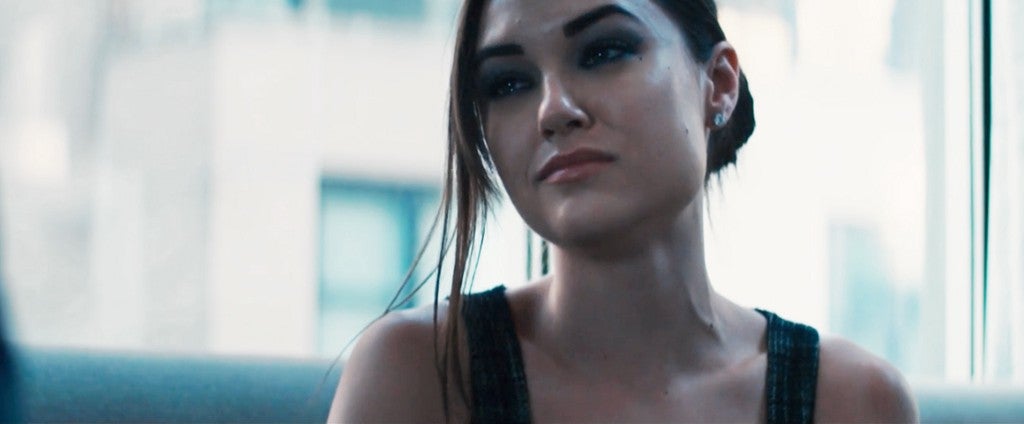On Sunday, Starz will unveil The Girlfriend Experience, a new limited series that’s very loosely based on the Steven Soderbergh film (of the same name) about a high-end escort plying her trade among rich clients in New York City. When the movie came out in May 2009, it was notable in several ways: It was one of Soderbergh’s change-of-pace, low-budget “experimental” films (like Bubble); and it starred Sasha Grey, a famous porn actress, in a serious, non-adult dramatic role. Even the poster’s tagline — “See It With Someone You ****” — was meant to play up the film’s titillating, possibly-X-rated subject matter.
Sadly for those who took that poster up on its offer, The Girlfriend Experience was not a steamy look at sex work. Instead, it became the best film made about the 2008 financial crisis. In that way, the movie’s not very sexy at all — but it is scary.
Recently, Hollywood has attempted to tackle the worldwide banking collapse that nearly sunk the global economy eight years ago. Films like Margin Call, The Wolf of Wall Street and The Big Short are terrific, intelligent takedowns of the greed and ego that fueled the crisis, but none of them are as tense or despairing as what Soderbergh achieved in his slender, 76-minute drama.
Sex may seem like the central subject, but it’s money that matters.
Grey played Christine, a successful Manhattan sex worker who offers what’s known as a “girlfriend experience”: For $2,000 an hour, she’ll spend a significant amount of time with a client, but do girlfriend-like things — maybe dinner and a movie before sex. Calling herself “Chelsea” when she’s on the job, Christine is half-sexual fantasy, half-therapist, ready to listen to her clients’ mundane worries. Because the film is set in October 2008, most of those anxieties are based around the falling stock market, an uncertain financial future and whether either of the two candidates for president (Barack Obama and John McCain) can do anything about it. Sex may seem like the central subject, but it’s money that matters.
The Girlfriend Experience’s relevant obsession with money was partly a product of good fortune. The film, written by Brian Koppelman and David Levien, had begun development in 2006, but when it came time to shoot in the fall of 2008, the financial crisis was dominating the news. “By design, the people that are cast in the film are encouraged to speak for themselves and to say whatever’s on their minds,” Soderbergh told Filmmaker around The Girlfriend Experience’s release. “It just happened to be a weird circumstance that we shot the movie in October of last year and all anybody was thinking about was money and, secondarily, the election.”
Soderbergh purposefully chose non-professional actors for major roles — including model and personal trainer Chris Santos to play Christine’s personal-trainer boyfriend and film critic Glenn Kenny as a self-described “erotic connoisseur” whose “review” of Christine could make or break her career. The director’s strategy helped give the film an air of unpolished, documentary-like realism, making the characters’ shared anxiety all the more believable. There are very few scenes in The Girlfriend Experience in which money isn’t being discussed.
As a result, The Girlfriend Experience, now quite a few years removed from the financial crisis, still elicits the same queasy feeling. Because it was filmed as the crisis and the election were looming, the film has a you-are-there quality, but its time-capsule value extends beyond that. The film hangs heavy with dread: The sky is falling and nobody knows what to do. And unlike these recent Wall-Street-is-evil films, The Girlfriend Experience isn’t set directly in the financial world. Christine’s clients come from all different walks of life — including more than a few from the entertainment industry — which lends the movie a broader perspective. This was a crisis that affected everyone, not just the day traders. And whether it’s Christine’s wealthy johns or her boyfriend (who’s struggling to get a sports clothing line off the ground), everybody’s hurting.

Of all the film’s characters, Christine may be the one who talks about money the least, which might seem surprising considering her profession. But that doesn’t mean it isn’t constantly on her mind. We never see her have sex. Instead, scenes of Christine listening to her clients blather are juxtaposed with moments of her carefully building her business. She looks for a website developer; she’s interviewed by a journalist; she talks to her accountant. Christine is exceedingly passive — an empty, pretty vessel who has skillfully learned to hide any bit of personality so that her clients can envision her however they want.
Christine’s passivity articulates what’s left unsaid: Her rich johns will land on their feet, while people on the margins like herself are the ones who are going to bear the brunt of the crisis.
But that emptiness also suggests sadness. There’s a hot, young, new escort in town (Caitlin Lyon) who looks an awful lot like Christine, and after the Erotic Connoisseur gives our heroine a bad review, she’s worried her career may stall. Christine is soon ensnared by the same money and professional worries that are choking everyone around her. When her clients lecture her about what she should do with her money to survive the economic downturn — or who she should vote for in the election — Christine’s passivity articulates what’s left unsaid: Her rich johns will land on their feet, while people on the margins like herself are the ones who are going to bear the brunt of the crisis.
That slow ache pervades The Girlfriend Experience, as we begin to see how every scene is some sort of transaction or negotiation — for a raise, for a better deal, for some sort of competitive advantage in one of the world’s most cutthroat cities. Rarely has the simple process of haggling in a movie felt so nauseating — it’s just a constant reminder that money rules every aspect of our lives, and that we’ll never have enough. Amidst the panic of the 2008 financial collapse, The Girlfriend Experience felt like a countdown to doomsday — which probably explains why it has none of the slickness, wit or rat-a-tat dialogue of those other financial-crisis films. When Soderbergh’s movie was being crafted, we didn’t know if there would even be an economy left to satirize. The fear is too immediate, too real.
Since then, the global markets have stabilized and so, not surprisingly, the new Starz series (set in present day Chicago) focuses on other, more topical concerns. And yet, Soderbergh’s The Girlfriend Experience hasn’t lost an ounce of its relevance. The financial meltdown is behind us. But the anxieties and dog-eat-dog ruthlessness that fueled the crisis and pervade the film? They’re still everywhere you look.
Tim Grierson is one-half of The New Republic’s film column Grierson and Leitch and the author of six books, including Martin Scorsese in Ten Scenes.

